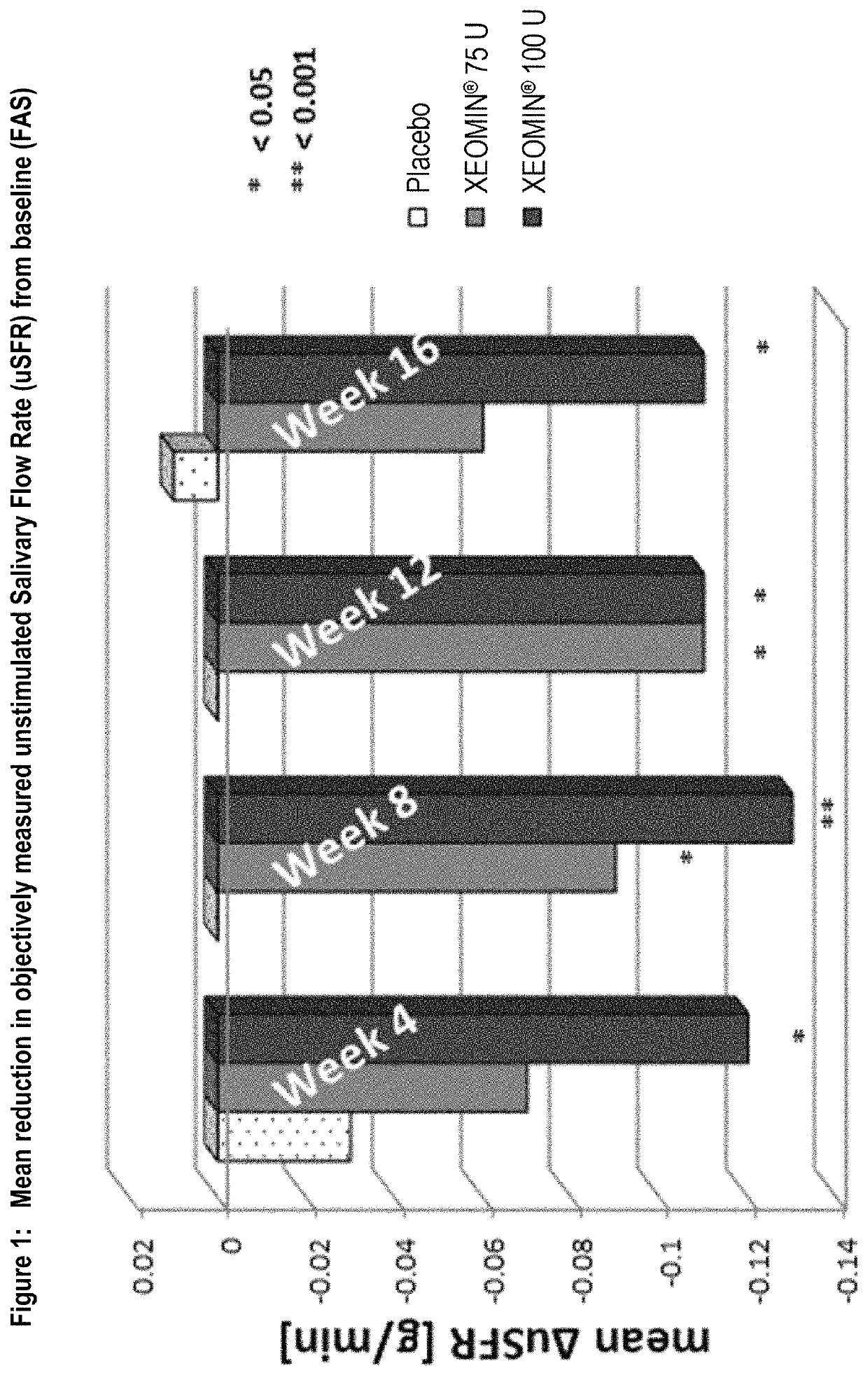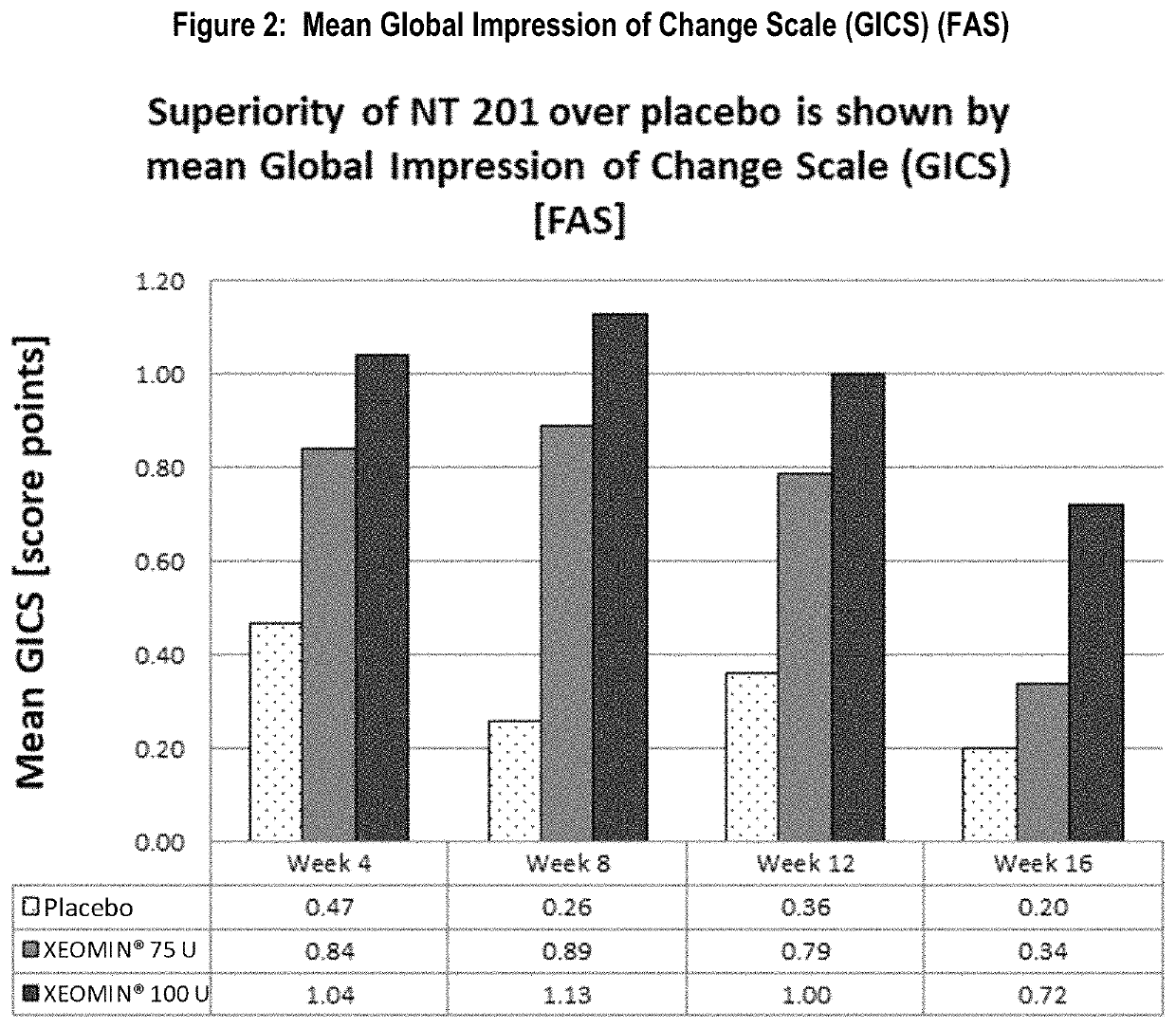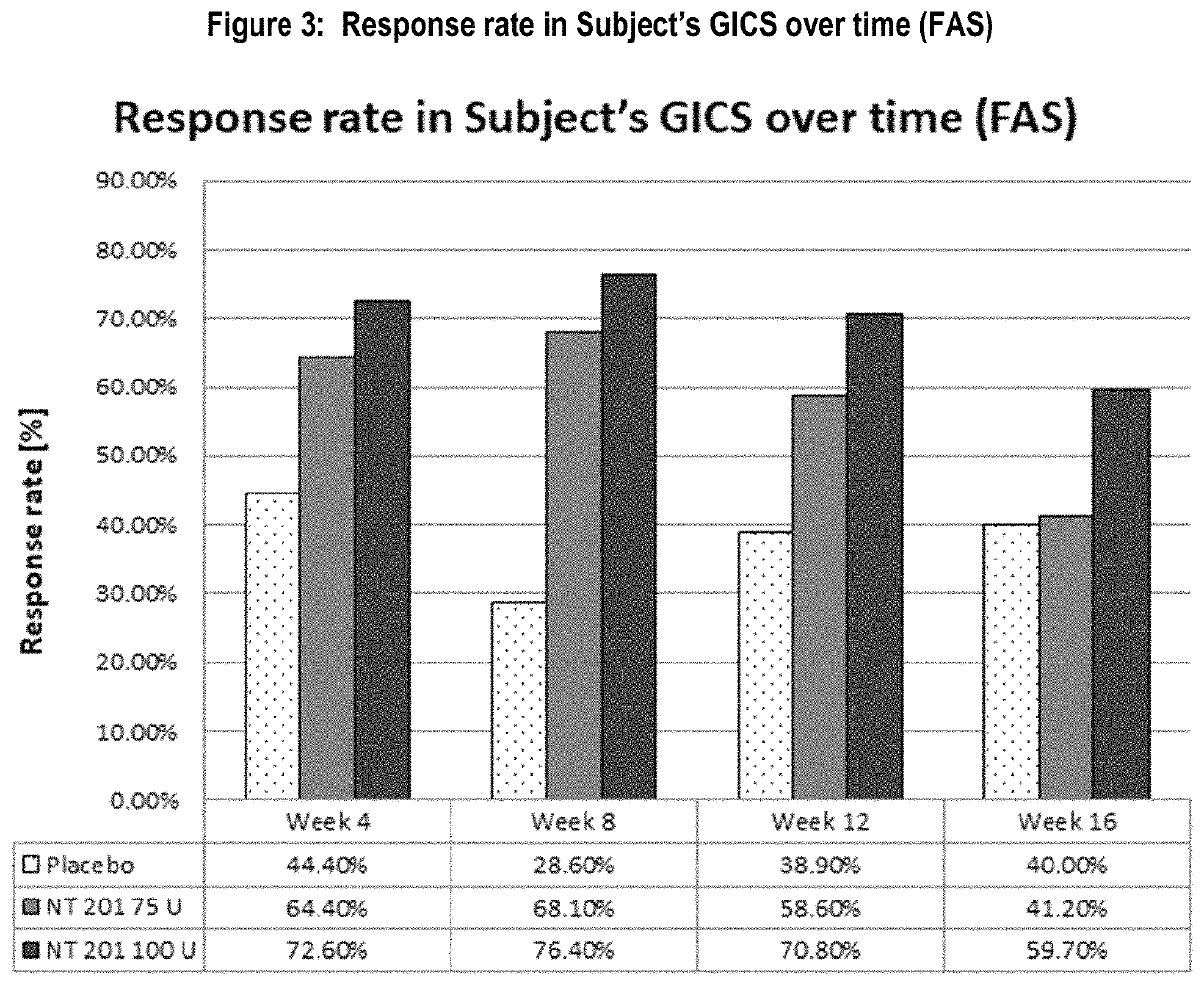Use of botulinum neurotoxin in the treatment of sialorrhea
a technology of botulinum neurotoxin and sialorrhea, which is applied in the direction of drug compositions, human health protection, peptide/protein ingredients, etc., can solve the problems of lower mouth or swallowing the overproduced amount of saliva, the upper threshold of the ability, and the inability to cough and irritation, so as to reduce the amount of produced saliva, avoid side effects, and limit the activity of the salivary glands
- Summary
- Abstract
- Description
- Claims
- Application Information
AI Technical Summary
Benefits of technology
Problems solved by technology
Method used
Image
Examples
example 1
f the Placebo Controlled Main Period (uSFR)
[0084]Overall, 184 subjects with chronic troublesome sialorrhea were treated during the MP of the study. The study had two co-primary efficacy endpoints. One of the co-primary efficacy endpoints was the change in the unstimulated salivary flow rate (uSFR) from baseline to week 4 (see Table 1 for mean changes over time). At all time points, the uSFR was meaningfully reduced in both NT 201 treatment groups with the effect being more pronounced in the NT 201 100 U dose group as presented in FIG. 1. At Week 4, statistically significant superiority over placebo was shown for the NT 201 100 U group (p=0.004). Mean uSFR values in the NT 201 75 U with p-values less than 0.05 (Table 1) were reached at Weeks 8 and 12 (p-values: 0.022 and 0.019, respectively). The treatment effects observed in both the NT 201 100 U and NT 201 75 U groups can be considered as clinically relevant.
[0085]
TABLE 1Mean uSFR [g / min] at baseline and meanuSFR changes from basel...
example 2
f the Placebo Controlled Main Period (GICS)
[0086]The other co-primary efficacy endpoint was the improvement in global functional scale of subjects measured by the Global Impression of Change Scale (GICS) at Week 4. The GICS is a 7-point Likert scale completed by subjects answering the question “Compared to how you were doing just before the last injection into your salivary gland, what is your overall impression of how you are functioning now as a result of this treatment?” Both dose groups reached an improvement. A statistically significant difference in favor of the 100 U treatment group over the placebo was seen in Week 4 (p=0.002, Table 2, FIG. 2). The 75 U group showed numerically better results compared to placebo at Week 4, but the difference shortly missed statistical significance (p=0.055). Nevertheless, p-values of less than 0.05 were reached in both dose groups at Week 8 and Week 12 and at Week 16 in the 100 U dose group as presented in FIG. 2.
[0087]
TABLE 2Mean Subject's ...
example 3
: Results of the Placebo Controlled Main Period (GICS)
[0088]The predefined response criterion for the GICS endpoint to be considered clinically meaningful improvement of drooling was at least one point improvement on the scale (minimally improved). Results of the responder analysis for all treatment groups are presented in Table 3 and FIG. 3.
[0089]
TABLE 3Response rate in Subject's GICS (FAS)P-valueP-valueFisher'sFisher'sPost baselineNT 201exact testNT 201exact testtime pointPlacebo75 Uvs. placebo100 Uvs. placeboWeek 1 (TC)36.1%51.4%0.15759.5%0.026Week 2 (TC)48.6%62.2%0.21566.2%0.095Week 444.4%64.4%0.06472.6%0.006Week 828.6%68.1%76.4%Week 1238.9%58.6%0.06670.8%0.002Week 1640.0%41.2%1.00059.7%0.065FAS = full analysis set,U = units,TC = telephone call
[0090]The response rate of the placebo group was lower than those of both NT 201 treatment groups throughout the Main Period. It varied from 28.6% (at Week 8) to 48.6% at Week 2. In the two NT 201 groups, the maximal Subject's GICS respons...
PUM
| Property | Measurement | Unit |
|---|---|---|
| time | aaaaa | aaaaa |
| time | aaaaa | aaaaa |
| body weight | aaaaa | aaaaa |
Abstract
Description
Claims
Application Information
 Login to View More
Login to View More - R&D
- Intellectual Property
- Life Sciences
- Materials
- Tech Scout
- Unparalleled Data Quality
- Higher Quality Content
- 60% Fewer Hallucinations
Browse by: Latest US Patents, China's latest patents, Technical Efficacy Thesaurus, Application Domain, Technology Topic, Popular Technical Reports.
© 2025 PatSnap. All rights reserved.Legal|Privacy policy|Modern Slavery Act Transparency Statement|Sitemap|About US| Contact US: help@patsnap.com



